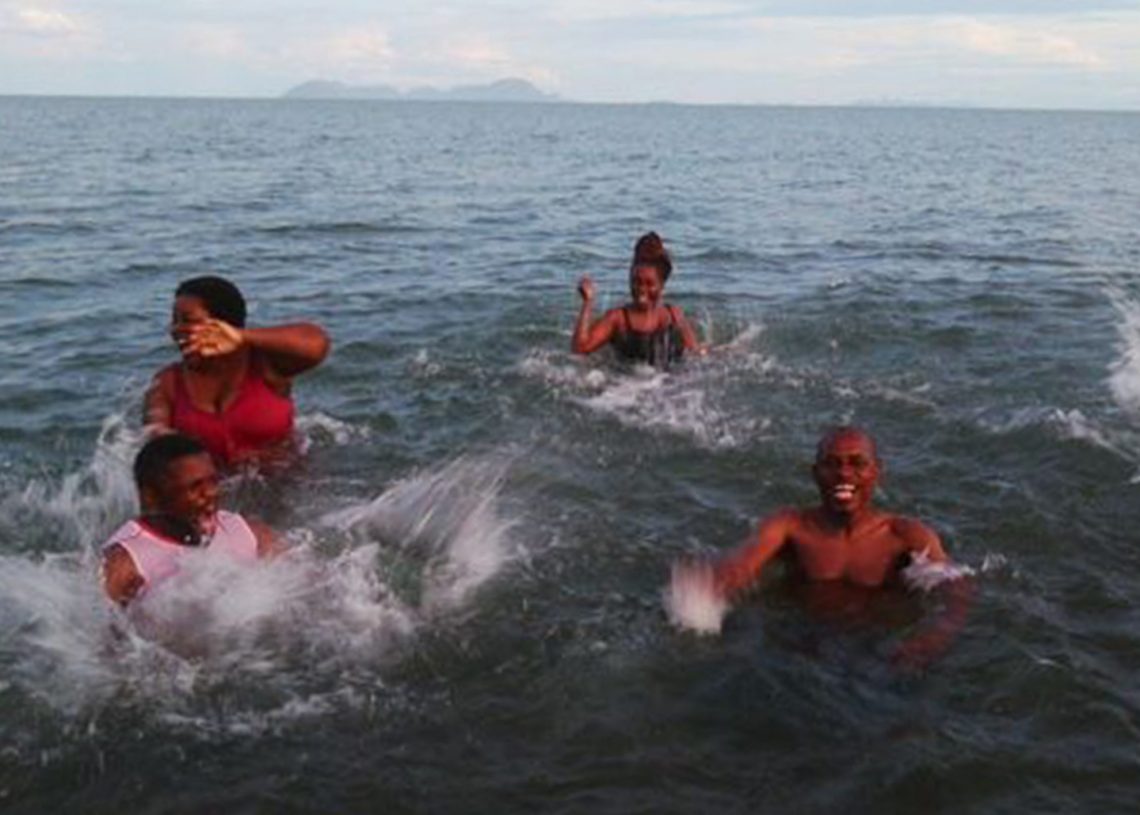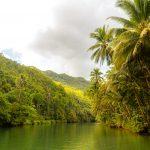
Swimming in Lake Malawi National Park
Lake Malawi – the world’s ninth largest lake covering an area larger than Wales – is where Dennis Lupenga learnt to swim. The freshwater lake remains his favourite place to swim “for its beauty and the freedom it offers”. He shares his swim story with Simon Griffiths.
Dennis Lupenga is a Voices from the Field Officer with WaterAid in Malawi. He documents the stories of communities and the issues surrounding water, sanitation and hygiene through words, film and photography. WaterAid works in education and health settings, training staff and users of the facilities in infection control. His work takes him around Malawi and, when he has the opportunity, he swims.
“I started swimming in secondary school,” he explains. “At my school, we did a retreat at the end of the year to a cottage on Lake Malawi, which is where I learned to swim.” Lake Malawi remains his favourite place to swim both for its beauty and the freedom it offers. “It’s not restricted, like the pool. I can swim where I like. There are no chemicals or salt. It’s a freshwater lake and doesn’t leave any smell on your body.”
However, what he spoke about most enthusiastically was the clarity of the water and the dazzling different coloured fish you see while swimming. “We have hundreds of species that are unique to Lake Malawi and are protected by UNESCO,” he explains. “And, we have chambo, which is a delicious local dish and a perfect post-swim meal.”

How safe is it to swim in Lake Malawi?
We wondered how dangerous it was to swim in Lake Malawi, whether there were dangerous animals or waterborne diseases, like bilharzia (an illness caused by a parasitic worm that lives in freshwater).
Dennis reassured us. “Where I swim, in Lake Malawi National Park, there is no bilharzia, although it is a risk in other parts, especially further north, but I don’t go in the water there anymore.”
He explains that he did once get infected with bilharzia while swimming in those more northerly parts, in Nkhotakota District, where lots of cattle feed along the lake edge, increasing the risk but he was successfully treated. As for our other worries, although Wikipedia says there are both hippopotamuses and crocodiles in Lake Malawi, Dennis says neither are present where he swims.
“While there are hippos in Lake Malawi, they are few and isolated. In my entire life, I have only seen them in Salima and in a small particular place where there are reeds. The same goes with crocodiles. I have never seen any crocodiles in Lake Malawi. Even our Malawi government has denied the existence of crocodiles in Lake Malawi. We do however have both crocodiles and hippos along the Shire river.”
Clean water and climate change
But there are two issues that concern Dennis, for both professional reasons and his love of swimming. “Unfortunately, a lot of people who reside along the lake use it as their toilet. Part of WaterAid’s work is to help make sure that such communities have proper latrines and use them, as this is important in reducing infections.”
The second concern is the impact of climate change, with temperatures predicted to increase there are already signs of water levels dropping in Lake Malawi. The effects of climate change are even more visible in Malawi’s second biggest lake, Lake Chilwa, where Dennis occasionally travels for work. A few years ago, three quarters of Chilwa dried up. Now, this year, it flooded, causing several deaths.
For anyone visiting Malawi and wanting to swim, Dennis recommends heading to Lake Malawi National Park, which has lifeguarded beaches and boasts impressive views. In particular he suggests swimming at Cape Maclear, Livingstonia Beach, Senga Bay, Chintheche, Kande Beach, Makuzi Beach, Ndokera Beach, Likoma Island, Mumbo Island, and Chizumula Island. However, he warns that it can be very windy in June and July, and due to the massive size of the lake, it can get too rough for swimming.
A guide to Lake Malawi
- Lake Malawi is the ninth largest lake by area in the world with a surface area of 29,500km2, making it larger than Wales.
- Three countries share its shoreline: Malawi, Mozambique and Tanzania.
- Lake Malawi reaches depths of more than 700m.
- The lake empties through the Shire River, which flows into the Zambezi.

Find out more about WaterAid and their work to improve water supplies and sanitation and to combat the impacts of climate change in Malawi and other countries.
Photos: WaterAid. Words: Simon Griffiths. Captions: Left: Samson, Charles, Flechala and Dumba, 25, fishing on Lake Chilwa in October 2020. Above: Lake Chilwa in April 2021 during the rainy season – market traders walking with their bicycles, on the largely evaporated river bed to get to the market that they set up in the middle of the lake.
To see all the online content from the June 2023 issue of Outdoor Swimmer, visit the 'Sea' page.








